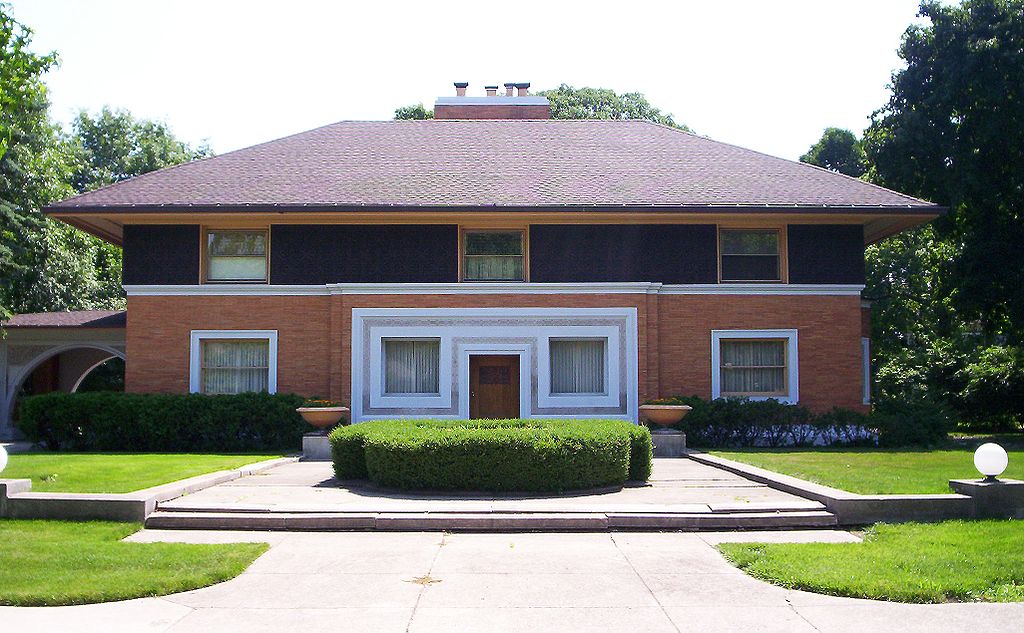#6326. Classic Prairie Style House Facade with Distinctive Horizontal Lines
The building presented demonstrates the characteristic features of the Prairie style architecture developed in the early 20th century by Frank Lloyd Wright. The facade is distinguished by horizontal lines and proportions, which is typical for this architectural direction. The base of the house is made of reddish-brown brickwork, while the upper floor has a dark finish, creating an expressive contrast.
The central part of the facade deserves special attention, framed by white geometric frames that highlight the entrance and first-floor windows. This detail gives the building symmetry and formality. The projecting low roof with wide overhangs, characteristic of the Prairie style, creates a sense of protection and connection with the surrounding landscape.
Windows are arranged in horizontal bands, which enhances the horizontality of the entire composition. The small semi-circular element visible on the left likely represents a transition or an extension that complements the main volume of the building. The landscaping with well-maintained hedges and symmetrical layout emphasizes the geometric rigor of the architecture and creates a smooth transition between the structure and the surrounding environment.
